
Station Name: WARRINGTON DALLAM LANE[Source:
Paul Wright]
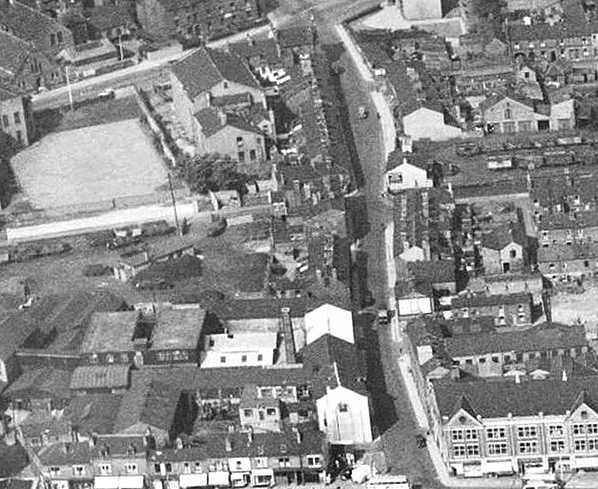 Warrington Dallam Lane station seen from the air in 1953 when it was still in use as a rail served coal yard. The station yard is middle left and railway wagons can be seen stabbled there. The station building which became a pub is to the right of the yard on Tanners Lane which can be seen running top to bottom. The line passed to the side of the building crossed Tanners Lane ran to the side of the white building and then ran north to Earlestown. More yards and sidings developed on the north side of Tanners Lane after closure to passenger services the bottom end of which can be seen middle right.
Reproduced with the kind permission of Simmons Aerofilms Ltd 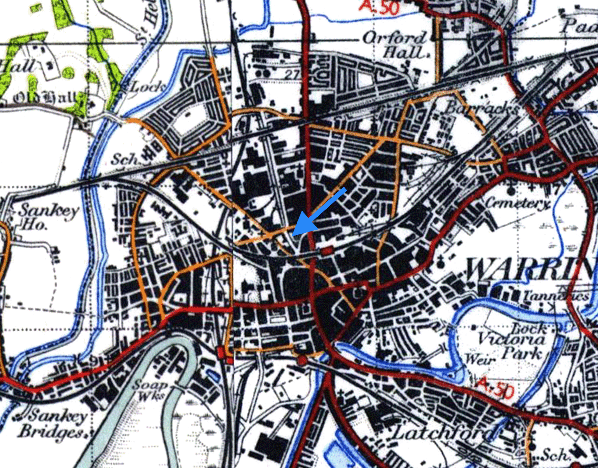 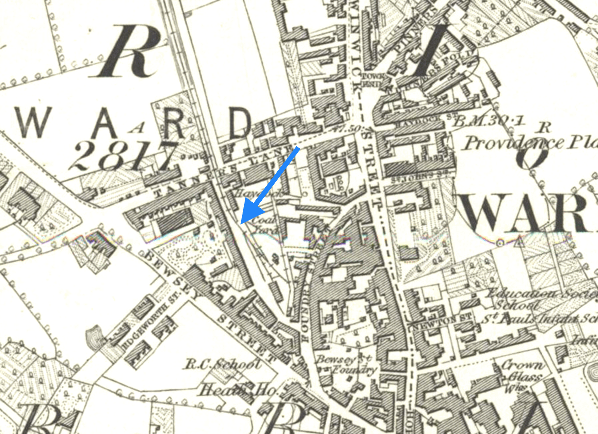 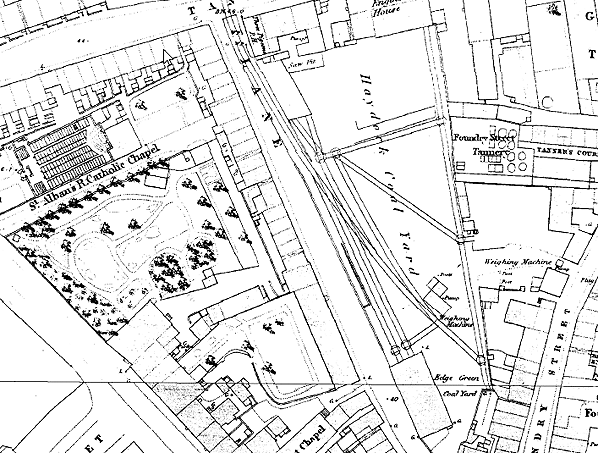
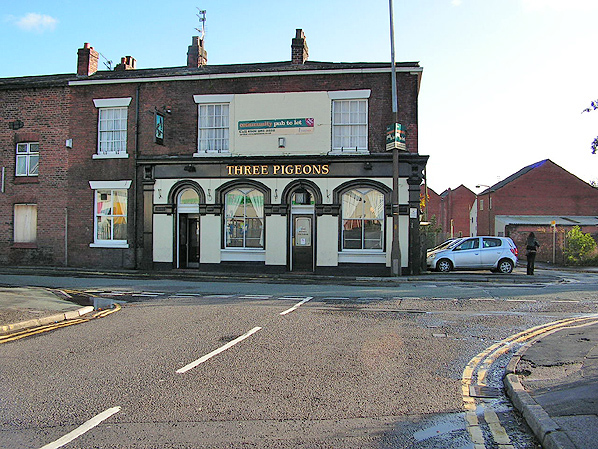
Looking south towards Warrington Dallam Lane station on 26 October 2008. The 'Three Pigeons' pub was the original station building that had been built in 1831. The ground floor had been altered in the late 19th century. The line passed to the right of the pub where the cars can be seen. At the rear of the station building there was a yard area and it is likely that trains departed from there.
Photo by Paul Wright 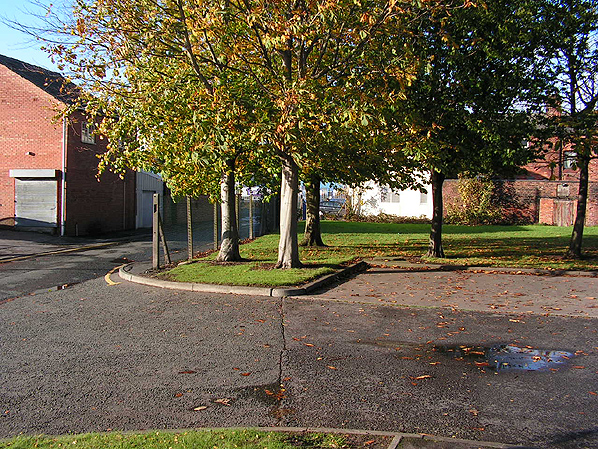 A view looking north at the site of Warrington Dallam Lane station on 26 October 2008. The station building, which became the 'Three Pigeons' pub can be seen beyond the trees.
Photo by Paul Wright .jpg) Looking east along Tanners Lane towards Warrington Dallam Lane station on 18 December 2014. The line crossed Tanners Lane and ran where the police van and cars can be seen. It then curved into a yard thyat was at the rear of the station building. Photo by Paul Wright .jpg)
A view looking north along Dallam Lane on 18 December 2014. Warrington Dallam Lane station had been to the right on the land that was being developed when this view was taken. The station building can be seen in the distance.
Photo by Paul Wright .jpg) Looking south at the yard are of Warrington Dallam Lane station on 18 December 2014.
Looking south at the yard are of Warrington Dallam Lane station on 18 December 2014. Photo by Paul Wright
|
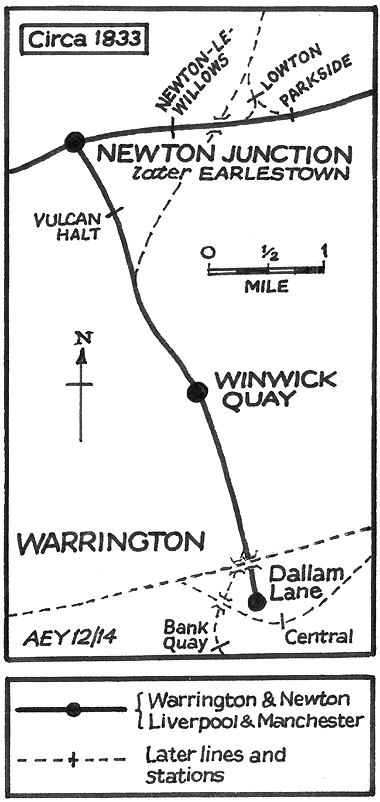 Warrington Dallam Lane station was located on the east side of its namesake, south of Tanners Lane. A two storey brick building was provided which housed the booking office and railway offices. The line crossed Tanners Lane by means of a level crossing and passed to the west of the station building onto Dallam Lane where it curved into a railway yard located behind the booking office. In the yard there was a goods shed and, to the east, a number of sidings.
Warrington Dallam Lane station was located on the east side of its namesake, south of Tanners Lane. A two storey brick building was provided which housed the booking office and railway offices. The line crossed Tanners Lane by means of a level crossing and passed to the west of the station building onto Dallam Lane where it curved into a railway yard located behind the booking office. In the yard there was a goods shed and, to the east, a number of sidings. 
 Home Page
Home Page